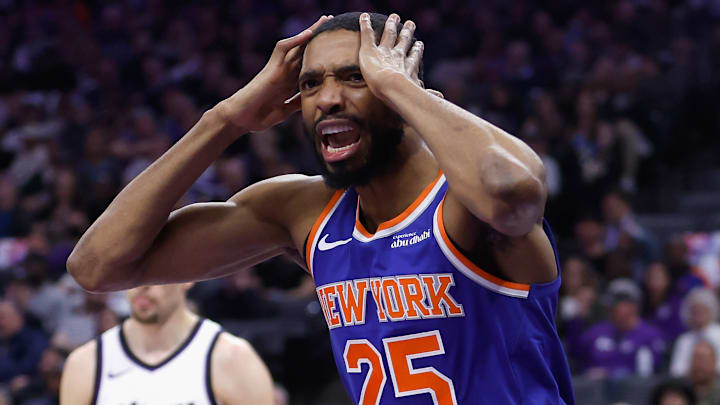For anyone fretting over the four-year, $150 million extension the New York Knicks just gave to Mikal Bridges, here’s a friendly piece of advice: Don’t.
Sure, the sticker shock right out of the gate is real. After all, $150 million is a lot of money. In actuality, though, the Knicks just paid Bridges like he’s around the 50th-best player in the NBA.
When his deal kicks in during the 2026-27 season, at the age of 30, he will be making just under $33.5 million—$33.48 million, to be more exact. According to Spotrac, this puts Bridges on pace to be the league’s 51st-highest paid player, sandwiched right between Jordan Poole at No. 50 ($34.04 million) and Julius Randle at No. 52 ($33.33 million), as of right now.
Emphasis on as of right now.
These salary rankings do not take into account players slated for 2026 free agency who don’t have any options on their current deals. Kevin Durant, LeBron James, and De’Aaron Fox should all be earning more than $33.48 million in 2026-27.
When all’s said and done, Bridges will be something like the 55th-highest paid player in the league that season. And his place in that hierarchy should only go down over the next few years, as other players reaching the end of their current deals sign more expensive agreements.
Yes, it’s okay to pay Mikal Bridges like a top-50 NBA player
Whatever your impressions of Bridges since being shipped away from the Phoenix Suns a few years ago, giving him a top-50-or-so salary is far from egregious. Even amid plenty of struggles last season, at both ends of the floor, he reinforced his utility as a plug-and-play wing capable of filling all sorts of gaps when operating within the vicinity of his peak.
Averaging over 17 points and three assists per game while shooting north of 59 percent on twos and 35 percent on threes is hardly a joke. Only Nikola Jokic, Evan Mobley, and Domantas Sabonis also hit those benchmarks. It says a lot about Bridges’ mid-range artistry that he’s the lone wing of the foursome. Jokic, Mobley and Sabonis all averaged well over five rim shot attempts per 75 possessions, according to BBall-Index. Bridges didn’t even spit out three of those looks per 75 possessions.
Early issues on the defensive end shouldn’t overshadow the level of difficulty placed upon New York’s wing, either. He finished in 97th percentile of matchup difficulty. That is not only the highest mark on the Knicks, but OG Anunoby is the sole teammate who even came close to rivaling it.
Delivering all of this while logging more total minutes across the regular season and playoffs than anyone else in the league has to count for something. This may not have been Bridges’ best year, but it wasn’t a worst-case introduction to Knicks fans by any stretch, and it means that he has room to improve under new head coach Mike Brown.
We can relitigate how much New York surrendered to get him until we’re every possible shade of blue in the face, and whether the cost was ultimately worth the prize. But that discussion must be untethered from his value to the Knicks now that he’s here. And make no bones about it, Bridge is absolutely a top-50 NBA player. Paying him like one is perfectly fine—particularly when he has the chance to be much better moving forward.
